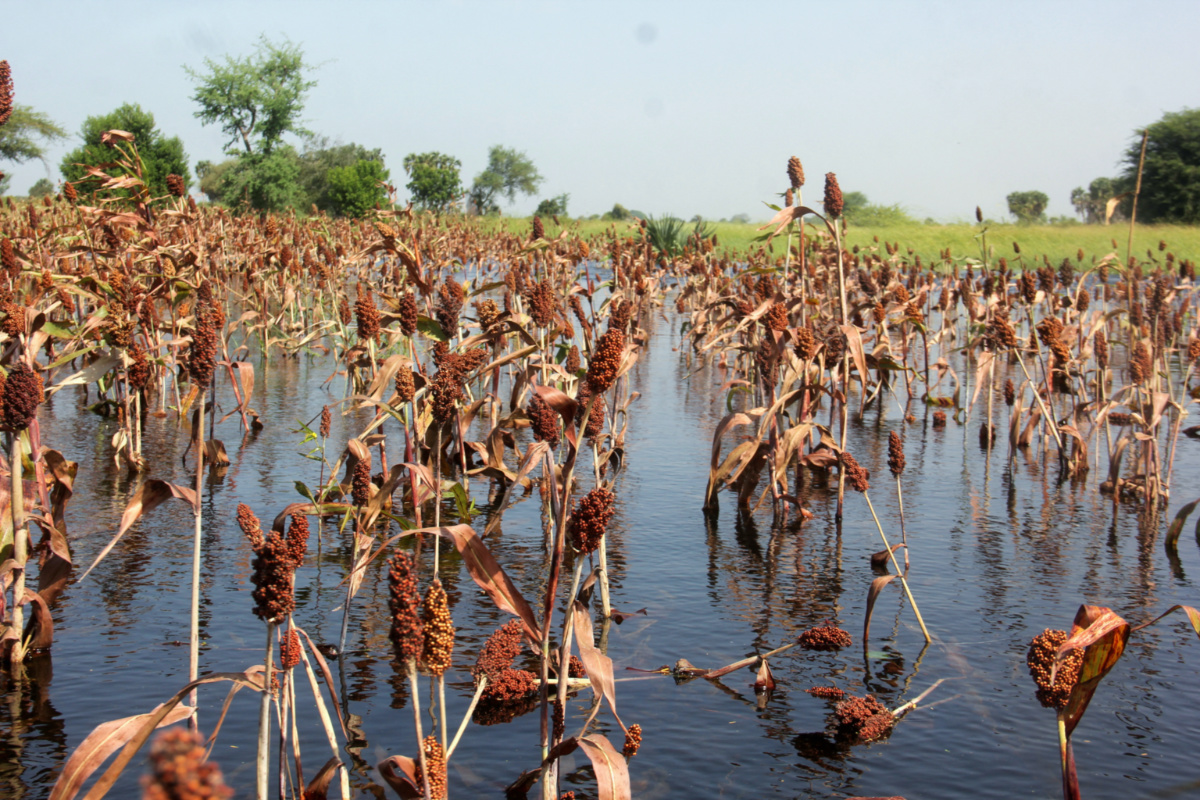Dakar, Senegal
Reuters
Forty-eight million people in West and Central Africa face acute food insecurity in the coming months, a 10-year high spurred by insecurity, climate shocks, COVID-19 and high prices, United Nations humanitarian agencies warned on Tuesday.
West and Central Africa has faced increasing risks caused by higher temperatures and erratic rainfall. War in Ukraine has contributed to food and fertiliser shortages in one of the world’s poorest regions.

General view shows the submerged red sorghum field after heavy rain in Kournari village, on the outskirts of Ndjamena, Chad on 26th October, 2022. PICTURE: Reuters/Mahamat Ramadan
The number of people without regular access to safe and nutritious food is projected to hit 48 million during the June-August lean season, according to a regional food security analysis presented by the UN’s World Food Programme, humanitarian agency OCHA, Food and Agriculture Organization and children’s agency UNICEF.
That is driven in part by the plight of countries in the semi-arid Sahel region south of the Sahara Desert including Mali and Burkina Faso which are battling an Islamist insurgency that has killed thousands and displaced around 2.5 million.
A record 45,000 people in the Sahel are expected to face catastrophic hunger, a level just short of famine, according to the agencies.
Fighting has cut off food supply routes in parts of the Sahel and other conflict hotspots around Lake Chad and in Central African Republic, said Alexandre Lecuziat, the WFP’s senior Emergency Preparedness and Response Advisor.
“We see areas that are completely blocked,” he said at a joint press conference in Dakar, explaining how the high cost of hiring helicopters to reach these zones depletes the funds available for buying food.
Overall, WFP faces a $US900 million deficit this year in the region, he said.
The forecast food shortages mean around 16.5 million children under five face acute malnutrition this year, according to the analysis.
The region’s dependence on imports has made it vulnerable to high global inflation rates even though many parts of West Africa saw improved rainfall in 2022 and an increase in cereal production.
“It is time for action to boost agricultural production to achieve food sovereignty in our region,” said Robert Guei, the FAO’s Sub-regional Coordinator for West Africa.






